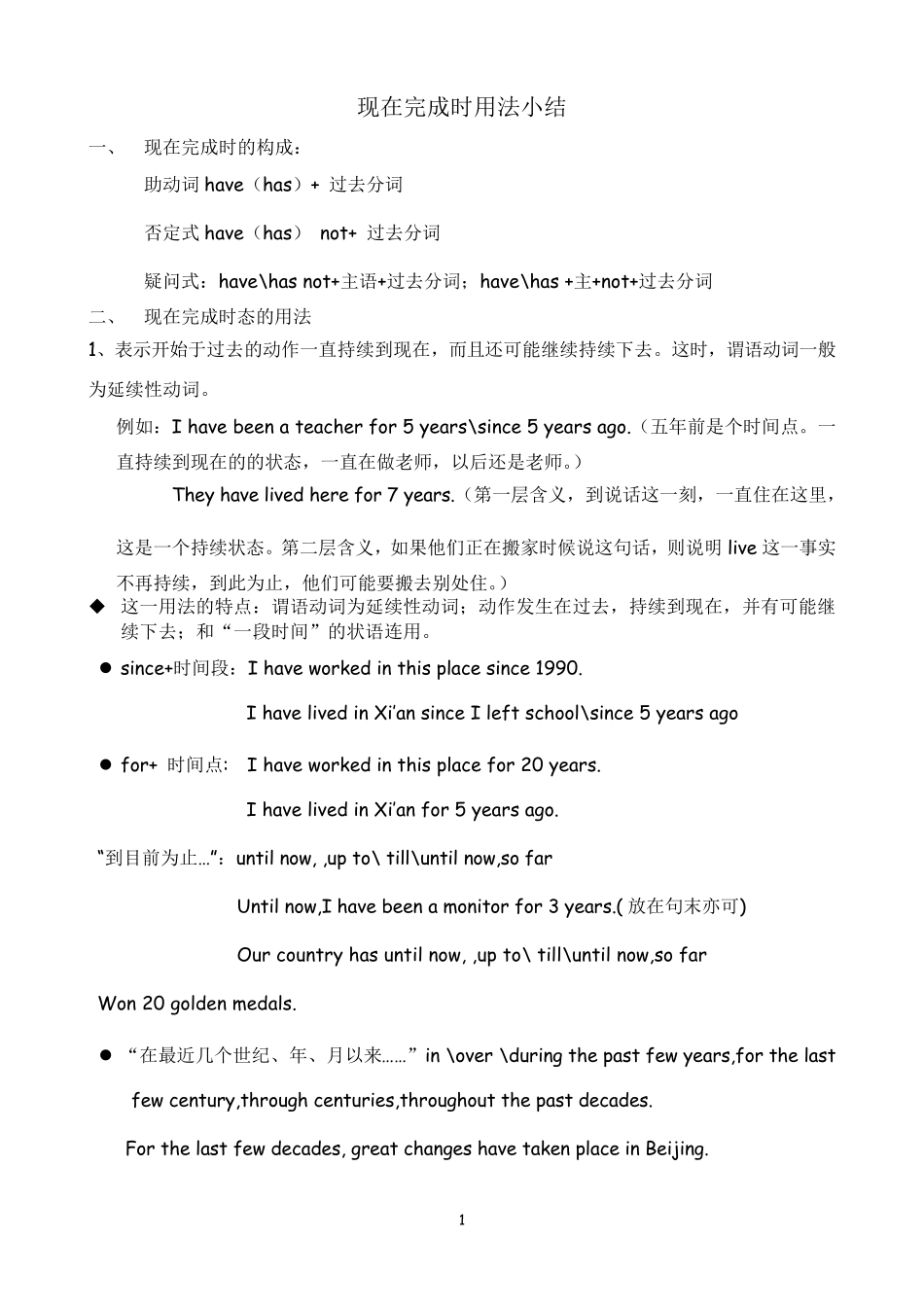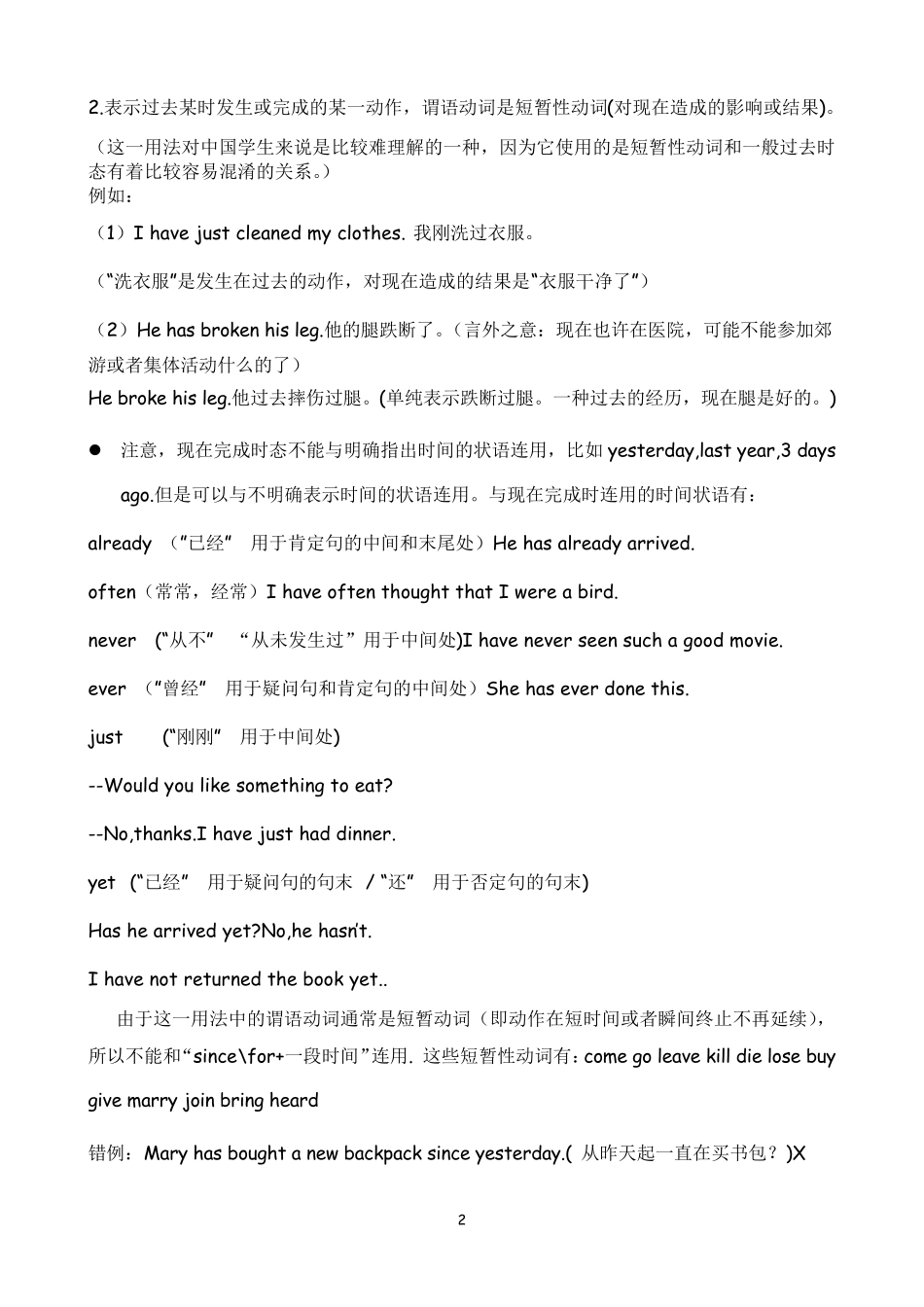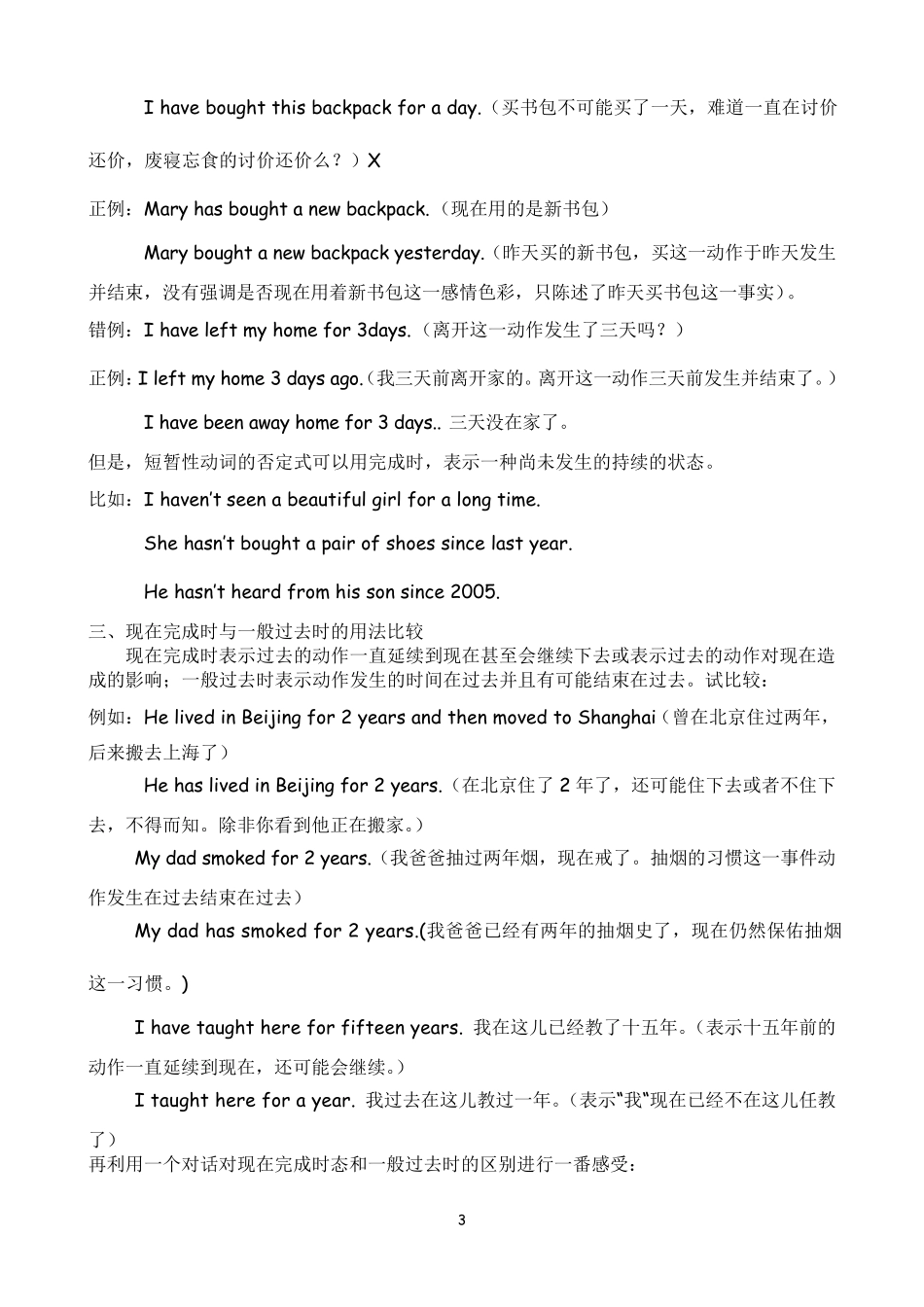1 现在完成时用法小结 一、 现在完成时的构成: 助动词have(has)+ 过去分词 否定式have(has) not+ 过去分词 疑问式:have\has not+主语+过去分词;have\has +主+not+过去分词 二、 现在完成时态的用法 1、表示开始于过去的动作一直持续到现在,而且还可能继续持续下去。这时,谓语动词一般为延续性动词。 例如:I have been a teacher for 5 years\since 5 years ago.(五年前是个时间点。一直持续到现在的的状态,一直在做老师,以后还是老师。) They have lived here for 7 years.(第一层含义,到说话这一刻,一直住在这里,这是一个持续状态。第二层含义,如果他们正在搬家时候说这句话,则说明live 这一事实不再持续,到此为止,他们可能要搬去别处住。) 这一用法的特点:谓语动词为延续性动词;动作发生在过去,持续到现在,并有可能继续下去;和“一段时间”的状语连用。 since+时间段:I have worked in this place since 1990. I have lived in Xi’an since I left school\since 5 years ago for+ 时间点: I have worked in this place for 20 years. I have lived in Xi’an for 5 years ago. “到目前为止…”:until now, ,up to\ till\until now,so far Until now,I have been a monitor for 3 years.( 放在句末亦可) Our country has until now, ,up to\ till\until now,so far Won 20 golden medals. “在最近几个世纪、年、月以来……”in \over \during the past few years,for the last few century,through centuries,throughout the past decades. For the last few decades, great changes have taken place in Beijing. 2 2.表示过去某时发生或完成的某一动作,谓语动词是短暂性动词(对现在造成的影响或结果)。 (这一用法对中国学生来说是比较难理解的一种,因为它使用的是短暂性动词和一般过去时态有着比较容易混淆的关系。) 例如: (1)I have just cleaned my clothes. 我刚洗过衣服。 (“洗衣服” 是发生在过去的动作,对现在造成的结果是“衣服干净了” ) (2)He has broken his leg.他的腿跌断了。(言外之意:现在也许在医院,可能不能参加郊游或者集体活动什么的了) He broke his leg.他过去摔伤过腿。(单纯表示跌断...


